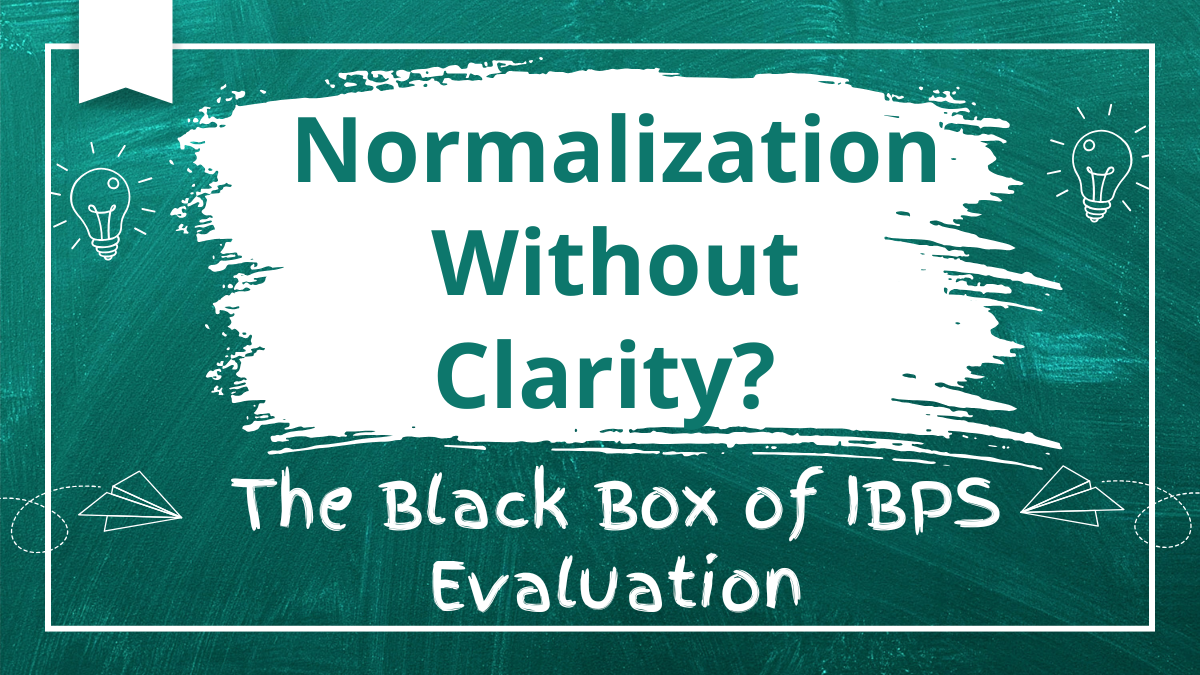Competitive banking exams like those conducted by the Institute of Banking Personnel Selection (IBPS) draw lakhs of candidates every year. While IBPS has earned a reputation for efficiently conducting large-scale exams such as PO, Clerk, SO, and RRB, and other banking and insurance exams, one particular aspect of its evaluation process continues to stir confusion and concern: the normalization process. Though intended to ensure fairness across multiple shifts, the lack of transparency makes many aspirants feel lost in a black box of unexplained results.
What is Normalization and Why is it Used?
Normalization is a statistical process used to adjust scores based on the difficulty level of various exam shifts. Since IBPS exams are held in multiple sessions to accommodate a large number of applicants, the difficulty level can vary slightly across these sessions. To ensure no candidate is disadvantaged due to a tougher shift, normalization balances scores to reflect fairness.
The Missing Formula: IBPS’s Lack of Transparency
Despite normalization being a crucial part of the result calculation, IBPS does not disclose the actual formula or method used. Unlike exams like SSC or CAT that provide a basic understanding of their normalization logic, IBPS chooses not to release even session-wise raw score data. This lack of transparency has led candidates to question the fairness and consistency of their evaluated marks.
Why Candidates Are Losing Confidence in IBPS?
Candidates often find large differences between their expected and normalized marks without any justification or explanation. Since raw scores and shift-wise cut-offs are not shared, aspirants are left wondering how their scores dropped, or in some cases increased, without any clarity. The situation worsens when even high-performing candidates unexpectedly fail to make the merit list due to unexplained normalized scores.
Comparisons with Other Competitive Exams
Exams like CAT (Common Admission Test) and SSC CGL also implement normalization. However, these agencies publish the normalization formula/ logic, which helps candidates understand how marks are adjusted. IBPS’s decision to withhold even the basic rationale creates an unnecessary barrier between candidates and transparency, especially when the outcome of the exam directly impacts their careers.
Banking Aspirants Demand Greater Transparency
With careers and futures at stake, it’s fair for aspirants to demand clarity from the body evaluating them. IBPS could enhance trust and reduce anxiety by disclosing:
- The normalization formula.
- Session-wise raw score data.
- Shift-wise difficulty indicators or scoring trends.
Providing these insights will help aspirants evaluate their performance and plan better for future attempts.
Normalization is necessary in multi-shift exams, but it must be accompanied by openness and accountability. When candidates do not understand how their scores are calculated, it undermines the credibility of the process. IBPS must address this long-standing concern by making its normalization process transparent. After all, aspirants are not just looking for a score, they’re looking for fairness and clarity in how that score came to be.
| Related articles | |
| What’s My Raw Score? | Is IBPS Losing Trust? |



 GA Capsule for SBI Clerk Mains 2025, Dow...
GA Capsule for SBI Clerk Mains 2025, Dow...
 The Hindu Review October 2022: Download ...
The Hindu Review October 2022: Download ...
 UIIC Assistant Syllabus 2026 and Exam Pa...
UIIC Assistant Syllabus 2026 and Exam Pa...







